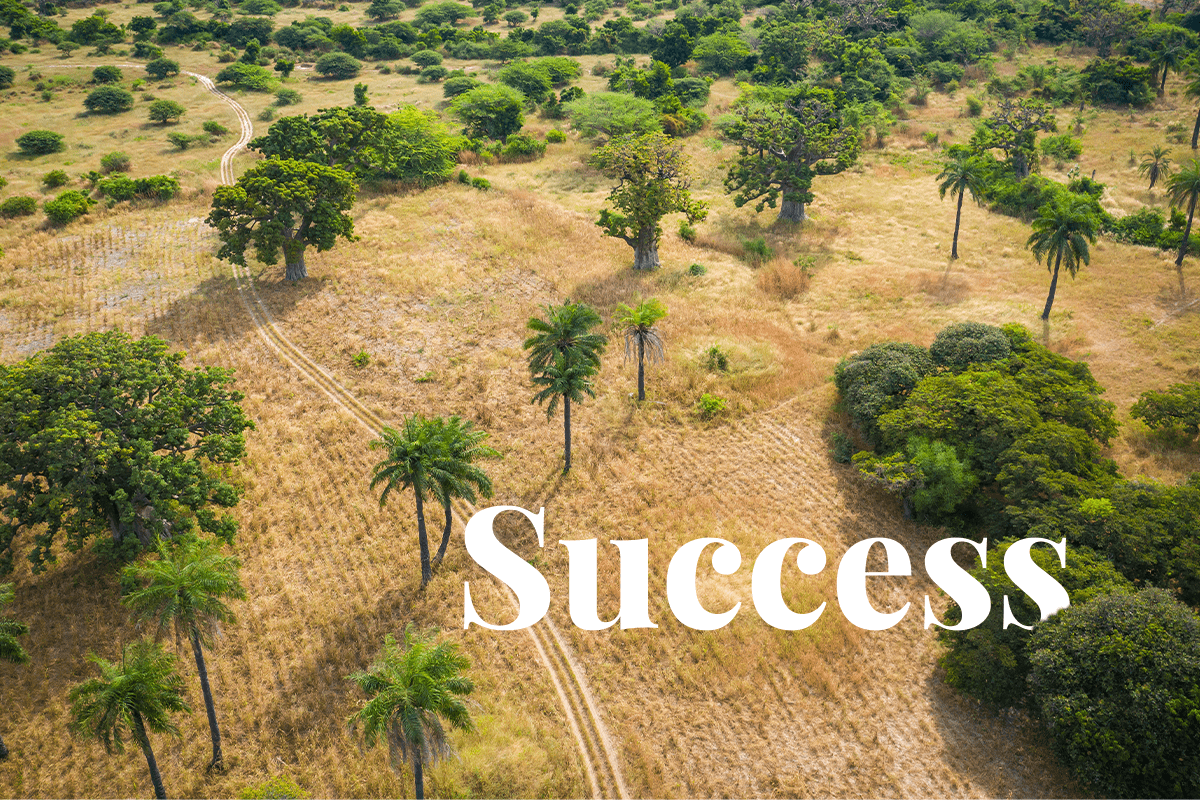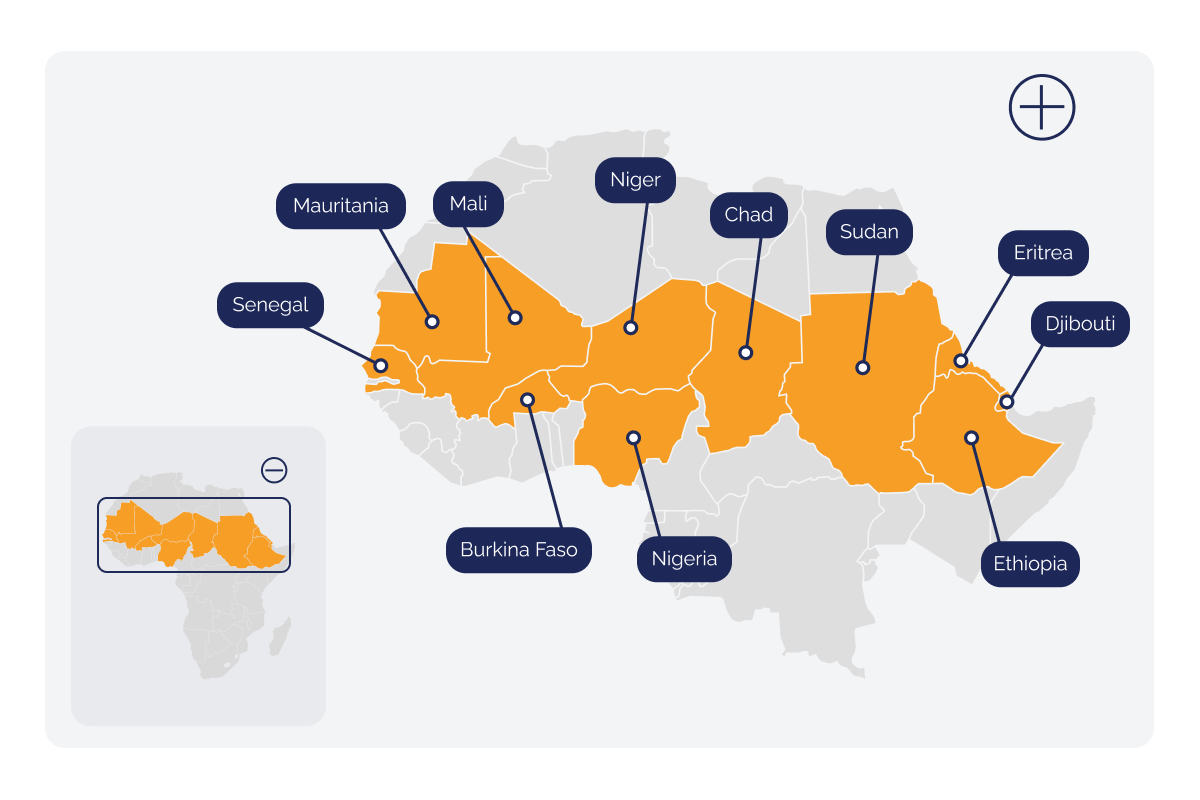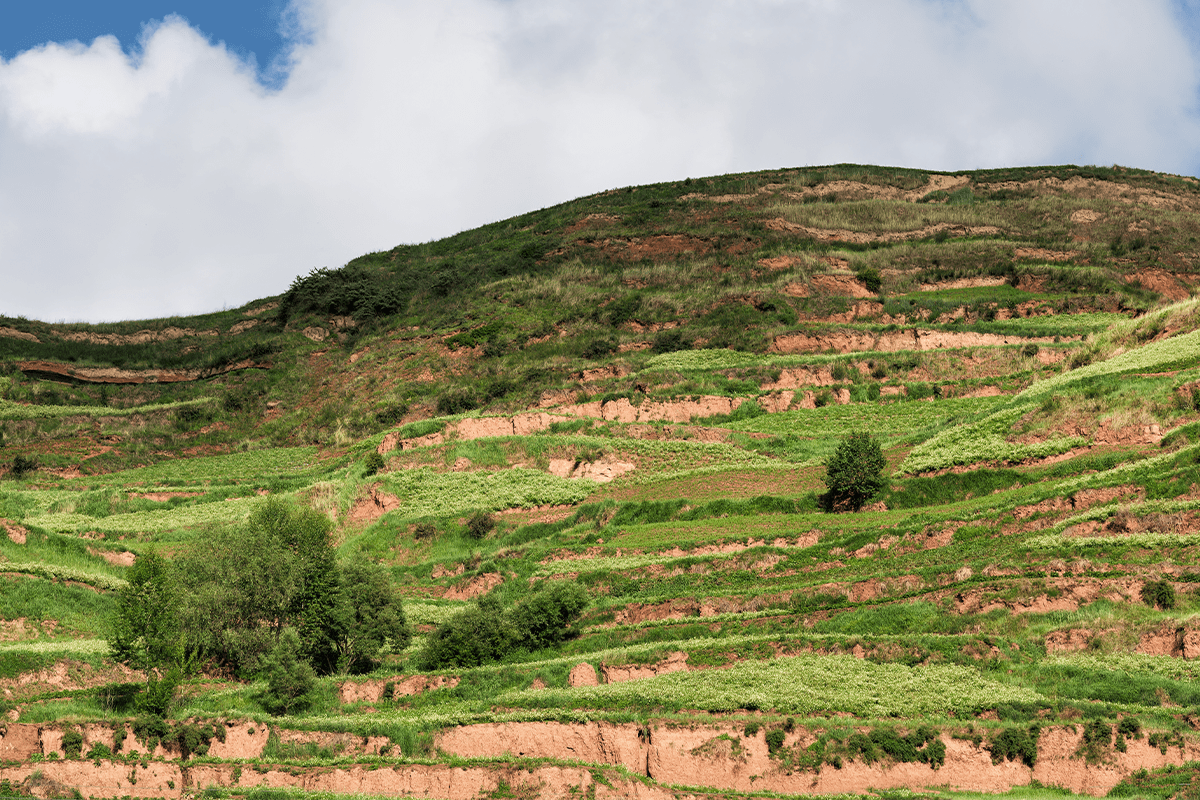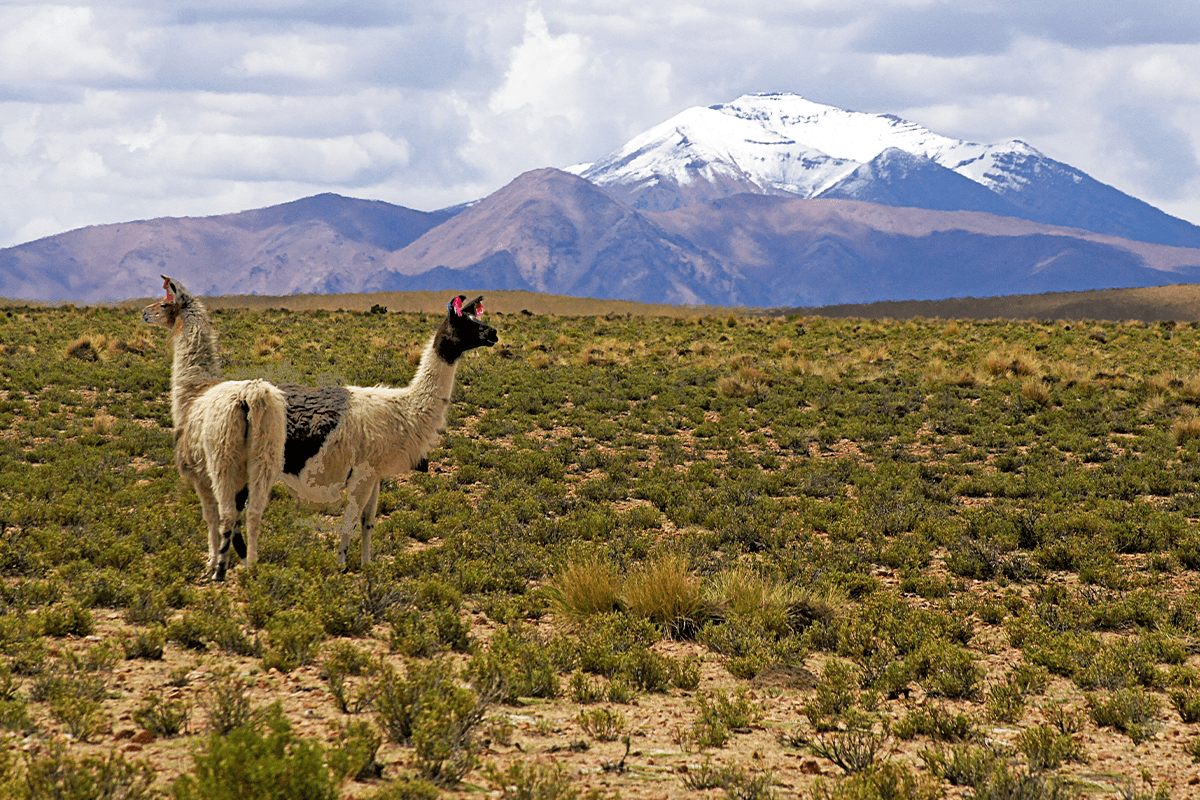Let’s start with what is desertification: Desertification is the process by which fertile land becomes barren and unsuitable for agricultural purposes due to a variety of reasons, including unsustainable agricultural practices or deforestation. Desertification affects over 3.2 billion people worldwide, making it a major environmental challenge. However, despite the gravity of the situation, there are several successful examples of desertification that was prevented or reversed around the world. This blog post will explore some of these success stories and draw lessons that can be applied in other regions.
 Senegal, West Africa.
Senegal, West Africa.
1. The Great Green Wall of Africa: a bold plan to combat desertification
The Great Green Wall is a massive tree-planting initiative that aims to combat desertification in Africa. The initiative, which was launched in 2007, seeks to plant a wall of trees spanning over 8,000 kilometres from west to east of the African continent. Participating countries include Djibouti, Eritrea, Ethiopia, Sudan, Chad, Niger, Nigeria, Mali, Burkina Faso, Mauritania, and Senegal. The project aims to reforest 100 million hectares of degraded land, providing a host of environmental benefits, including soil conservation, carbon sequestration, and biodiversity conservation. More than 20,200 hectares of trees have been planted so far in Senegal, and overall more than 181,000 hectares of land have been restored.
 The Great Green Wall of Africa; Source: https://education.nationalgeographic.org/resource/great-green-wall/
The Great Green Wall of Africa; Source: https://education.nationalgeographic.org/resource/great-green-wall/
2. China's greening campaign: a massive reforestation effort
China's greening campaign is another success story in the fight against desertification. The campaign began in the late 1990s and seeks to reforest large swaths of the country's degraded land. The project has been hugely successful, with China's forest coverage increasing from 12% in the 1980s to over 22% today. The reforestation effort has not only improved the country’s environmental conditions but has also provided economic benefits to local communities through sustainable tourism.
Read more: What are the effects of deforestation?
3. The Loess Plateau in China: a model for ecosystem restoration
The Loess Plateau in China is a great example of how ecosystem restoration can reverse the process of desertification. The plateau was once a barren wasteland, but through a combination of government-led policies and community participation, the area has been transformed into a thriving ecosystem. The project involved the terracing of hillsides, the construction of check dams, and the planting of trees and grasses. The initiative has not only prevented and reversed desertification but has also led to the restoration of water resources, increased agricultural productivity, and improved living conditions for local communities.
 Mountain village scenery in Gansu, China.
Mountain village scenery in Gansu, China.
Read more: The role of steppe ecosystems in Kazakhstan's agricultural industry
4. The Altiplano in Bolivia: a community-led restoration project
The Altiplano in Bolivia is a high-altitude plateau that was once severely degraded due to overgrazing and poor land management practices. However, a community-led restoration project has transformed the area into a productive landscape. The project involved the construction of check dams, the planting of native grasses, and the use of rotational grazing practices. The initiative has not only prevented desertification but has also improved the livelihoods of local communities through increased agricultural productivity and sustainable tourism.
 Llamas in the Altiplano, Bolivia.
Llamas in the Altiplano, Bolivia.
The Green Belt Movement in Kenya: a grassroots reforestation effort
The Green Belt Movement in Kenya is a grassroots initiative that seeks to empower women through reforestation efforts. The initiative was founded in 1977 by the late Nobel Peace Prize–winner Wangari Maathai and has since planted over 50 million trees across Kenya. The project has prevented desertification and provided economic benefits to local communities through sustainable forestry practices.
Make an impact today: start planting trees with DGB
5 Key desertification lessons learned
The successful examples of preventing desertification from around the world provide valuable lessons that can be applied in other regions. Here are some key takeaways:
1. Collaborative efforts are vital
Successful initiatives to prevent desertification involve collaboration between various stakeholders, including governments, local communities, and non-governmental organisations. Such collaborations are critical in achieving long-term success.
2. Ecosystem restoration is possible
Ecosystem restoration is a viable option for reversing the process of desertification. The success stories of the Loess Plateau and the Altiplano in Bolivia demonstrate that with proper planning and community participation, degraded landscapes can be transformed into thriving ecosystems, leading to numerous benefits for both people and the environment.
3. Sustainable land management is indispensable
Sustainable land management practices are essential for preventing desertification. This includes practices such as rotational grazing, crop diversification, and agroforestry, which can improve soil health and water retention and increase agricultural productivity.
Read more: What is sustainable land management?
4. Water management is critical for preventing desertification
Water management is crucial for preventing desertification. Successful examples such as the Loess Plateau and the Altiplano in Bolivia demonstrate the importance of water conservation and implementing measures such as check dams and terracing to restore degraded watersheds. By conserving and managing water resources, we can prevent land degradation, promote ecosystem resilience, and support sustainable development.
Read more: Trees are nature's water managers: the importance of trees in water conservation
5. Community participation and empowerment are crucial for the success of these initiatives
Community participation and empowerment are crucial for the success of initiatives to prevent desertification. Projects involving local communities' participation in decision making and implementation are more likely to be successful and sustainable in the long run. By engaging communities and empowering them to take ownership of these initiatives, we can ensure they are more effective, sustainable, and responsive to local needs.
DGB Group’s efforts against desertification
Planting trees is one of the best methods for preventing desertification. The success stories of the Great Green Wall in Africa and China's Greening Campaign demonstrate that reforestation is an effective strategy for combating desertification. We also recognise that other nature-based solutions can be employed, depending on the specific needs of the region.
At DGB Group, we are committed to working with governments, communities, and all relevant stakeholders to design and implement nature-based solutions tailored to each region's unique needs. By working together, we can ensure that our efforts to combat desertification are effective, sustainable, and impactful for generations to come.
Contact our experts and learn how you can contribute too






